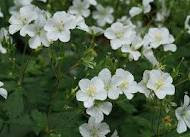Common broomrape is native to southern Europe and has colonized in Britain and North America . It was first noted in Oregon in 1923 and since then it has increased its population size so much so that it is listed as a noxious weed.
This plant is a complete parasite, lacking chlorophyll. It seems to prefer to live on red or white clover or wild carrot plants, while others live on specific plants such as thyme or thistle and are called after their hosts, for example, thyme broomrape. As a member of the Orobanchiaceae family it is a relative of red and yellow rattle, which are only semi-parasitic.
Common broomrape may be brown, yellow or purple, or other colours within this broad spectrum. They flower in May and will be in bloom until the end of August. The plant has astringent properties, which explains why it was used in traditional medicine for wound healing.
 The English herbalist, Nicholas Culpeper, writing in his Herball in the 17th century has this to say of the medicinal benefits and uses of broomrape: -
The English herbalist, Nicholas Culpeper, writing in his Herball in the 17th century has this to say of the medicinal benefits and uses of broomrape: -“The broom-rape also is not without its virtues. The decoction thereof in wine, is thought to be as effectual to void the stone in the kidney and bladder, and to provoke urine, as the broom itself. The juice thereof is a singular good help to cure as well green wounds as old and filthy sores and malignant ulcers; the insolate oil, wherein there has been three or four repetitions of infusion of the top stalks with the flowers strained and cleared, cleanseth the skin from all manner of spots, marks, and freckles, that arise either by the heat of the sun, or the malignity of humours. As for the broom and broom-rape, Mars owns them; and it is exceeding prejudicial to the liver. I suppose by reason of the antipathy between Jupiter and Mars: therefore, if the liver be disaffected, administer none of it.”
Culpeper describes the broomrape in this way:-
“The broom-rape springeth up in many places from the roots of the broom, but more often in fields, or by hedge-sides, and on heaths. The stalk thereof is of the bigness of a finger or thumb, above two feet high, having a show of leaves on them, and many flowers at the top, of a deadish yellow colour, as also the stalks and leaves are.”
He seems not to have realized its parasitic nature, and that it grows in “fields…hedgerows and on heaths” where there are plants such as red clover for it to live off. Interestingly, the crimson clover seems not to be to the liking of broomrape.
































